Looking for a new hobby? Try these 16 unique ideas
If you're looking for new hobbies to try, these creative and unique ideas will take you out of your comfort zone

If you're looking for new hobbies to try, these unique ideas are creative, fulfilling and in some cases, present a chance to meet new people or give back to the community. Not only that, they're great conversation starters.
When taking up a new hobby, try not to get bogged down by finding something ostensibly productive. The best hobbies for women (or men) are all about what personally gives you pleasure. Think about whether or not you want a relaxing hobby to help you switch off, or if you would rather do something more physical. Do you want to pick up something creative, or are you more interested in learning a new skill that you can put to use?
Whatever you're looking for, you'll find something in our guide, which covers easy hobbies you can pick up at home, as well as involved activities that require structured learning.
Unique hobbies to try
1. Cold water swimming
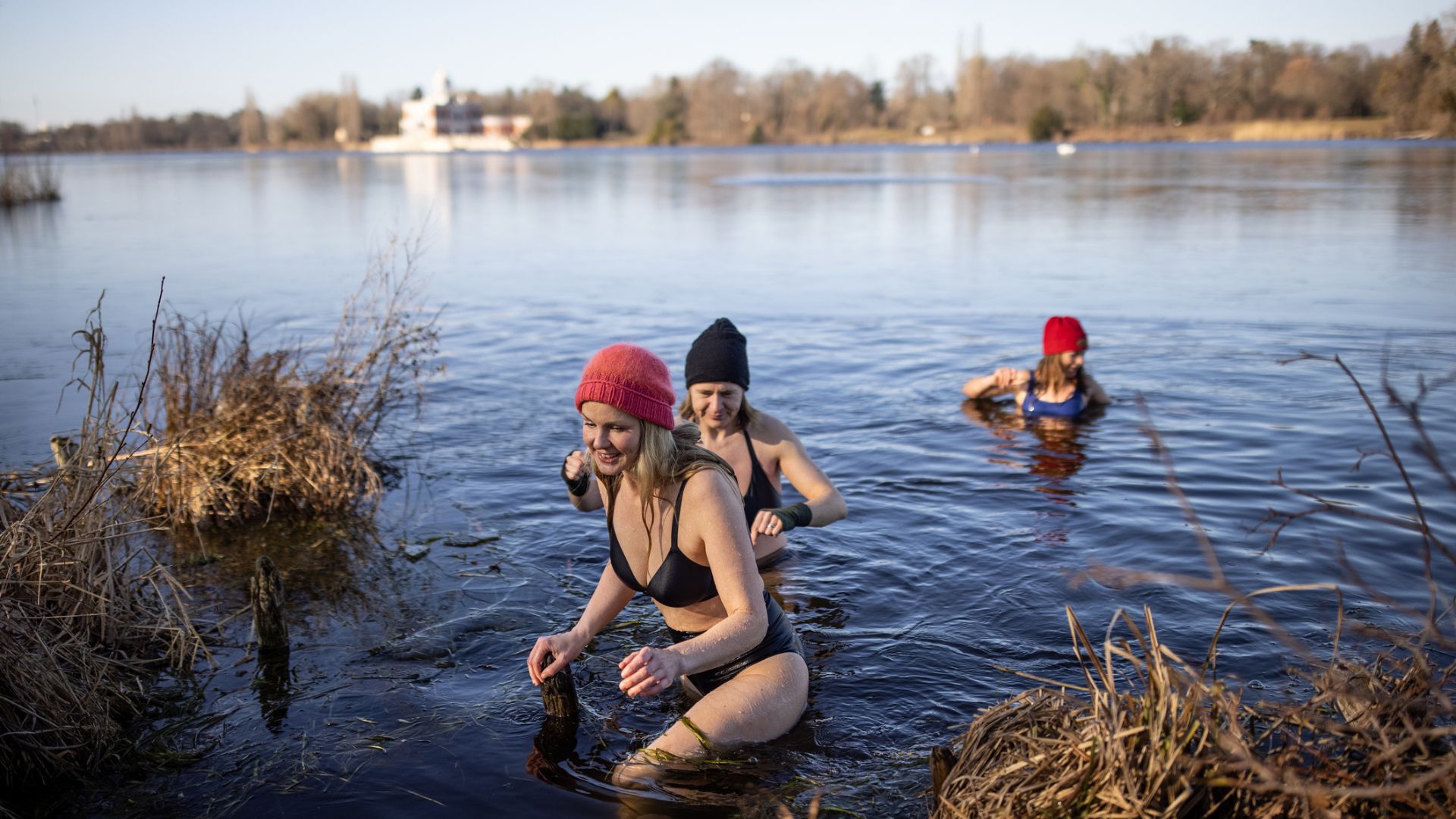
It might sound terrifying at first, but once you get over your initial fear, the benefits of cold water swimming are endless. From boosting your mood to kick-starting your metabolism and immune system, a dip in cold water can be a great tonic for both your body and mind. Not to mention, a short swim is an effective full-body workout. It might be tempting to (quite literally) jump in at the deep end, but you need to ease yourself into this hobby. It's advisable to start in the summer months when water temperatures are a little warmer, that way you can slowly acclimatize your body to the colder temperatures slowly and build up a tolerance over time. Getting the right equipment is important too; a good-quality wetsuit, neoprene gloves, and boots, as well as a woolly hat are a must. Aside from the health benefits, cold water swimming can be a fantastic social hobby too as there are countless informal clubs and support groups running across the world. Cold water swimming also features on our guide to the best hobbies for woman in their 30s but it's truly an all-ages activity, depending on your fitness levels.
How to get started: While getting started isn't difficult, it's important to do thorough research to understand whether or not its right for you, and to create a training schedule for yourself, also ensuring you have the right gear. The Outdoor Swimming Society is a great resource for newbies and breaks down everything you need to know, plus tips on how to acclimatize yourself to the cooler temps.
2. Foraging for flowers and foliage
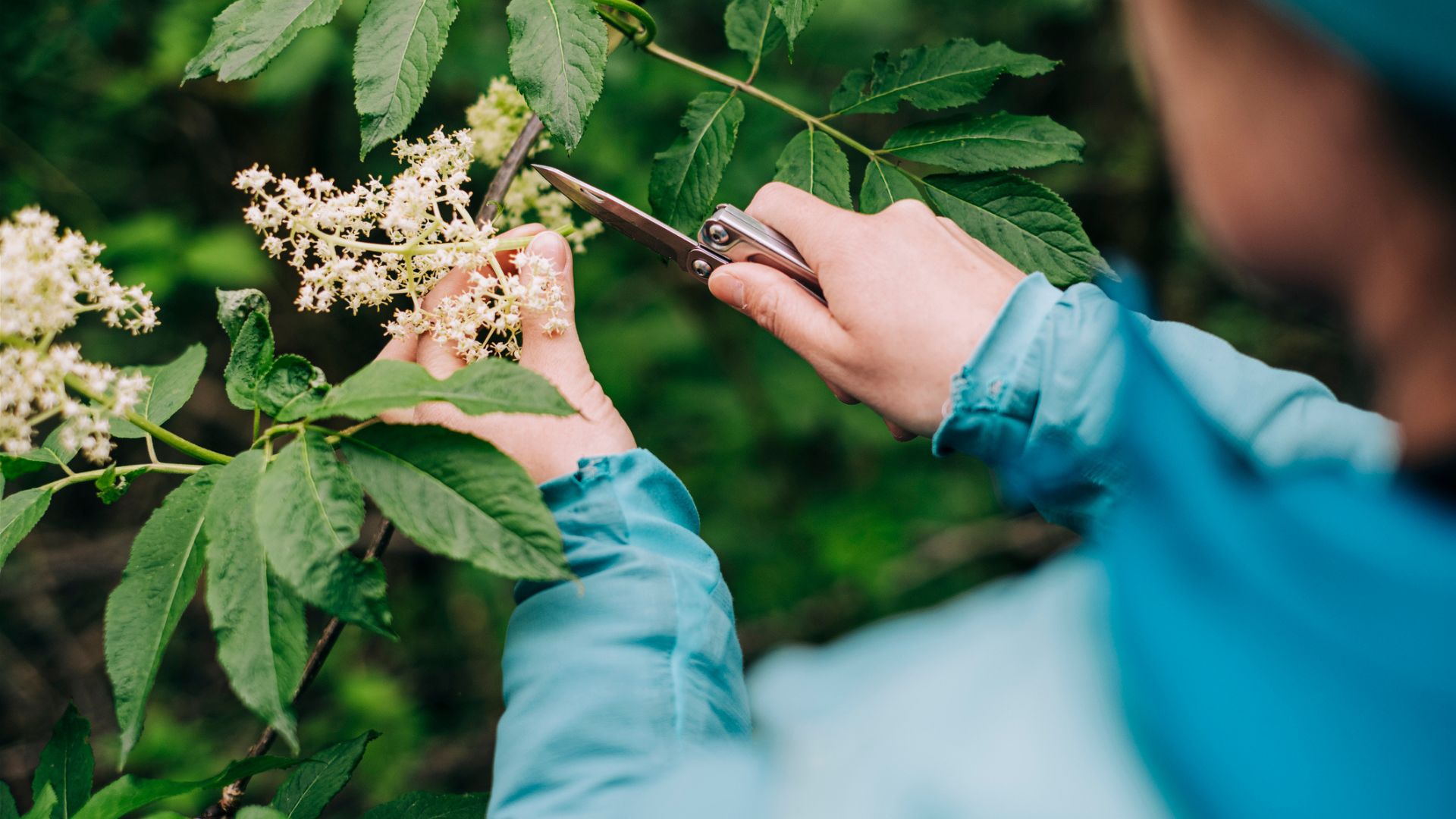
When you think of foraging, foraging for food probably springs to mind. However, foraging for flowers or foliage is a slightly easier entry point for the hobby and is ideal for anyone interested in home interiors or styling as you can easily create stunning accent pieces for your home.
Interior stylist and DIY writer Claire Douglas explains how she got into the hobby, "I absolutely love flowers and have always found ways to incorporate them into the rooms (or images) that I’m styling," she tells us. "I let sections of our garden grow quite wild so there is usually lots of foliage and greenery to use, but as my ideas grew bigger and bolder I had to look further afield (no pun intended!) for twigs and branches to fill the gaps.
Sign up to our free daily email for the latest royal and entertainment news, interesting opinion, expert advice on styling and beauty trends, and no-nonsense guides to the health and wellness questions you want answered.
"Whilst out and about I’d often spot foliage or greenery and know instantly how I could incorporate it, for example, a beautiful fallen branch under a tree or some lovely twigs that would be perfect to hang ornaments on or perhaps suspend over a table. I’ve even been known to return from the school run with a large stick or two under my arm!
"Foraging for home styling purposes can be as simple as gathering a few beautiful pine cones for a festive coffee table display and it’s guaranteed to make you happy."
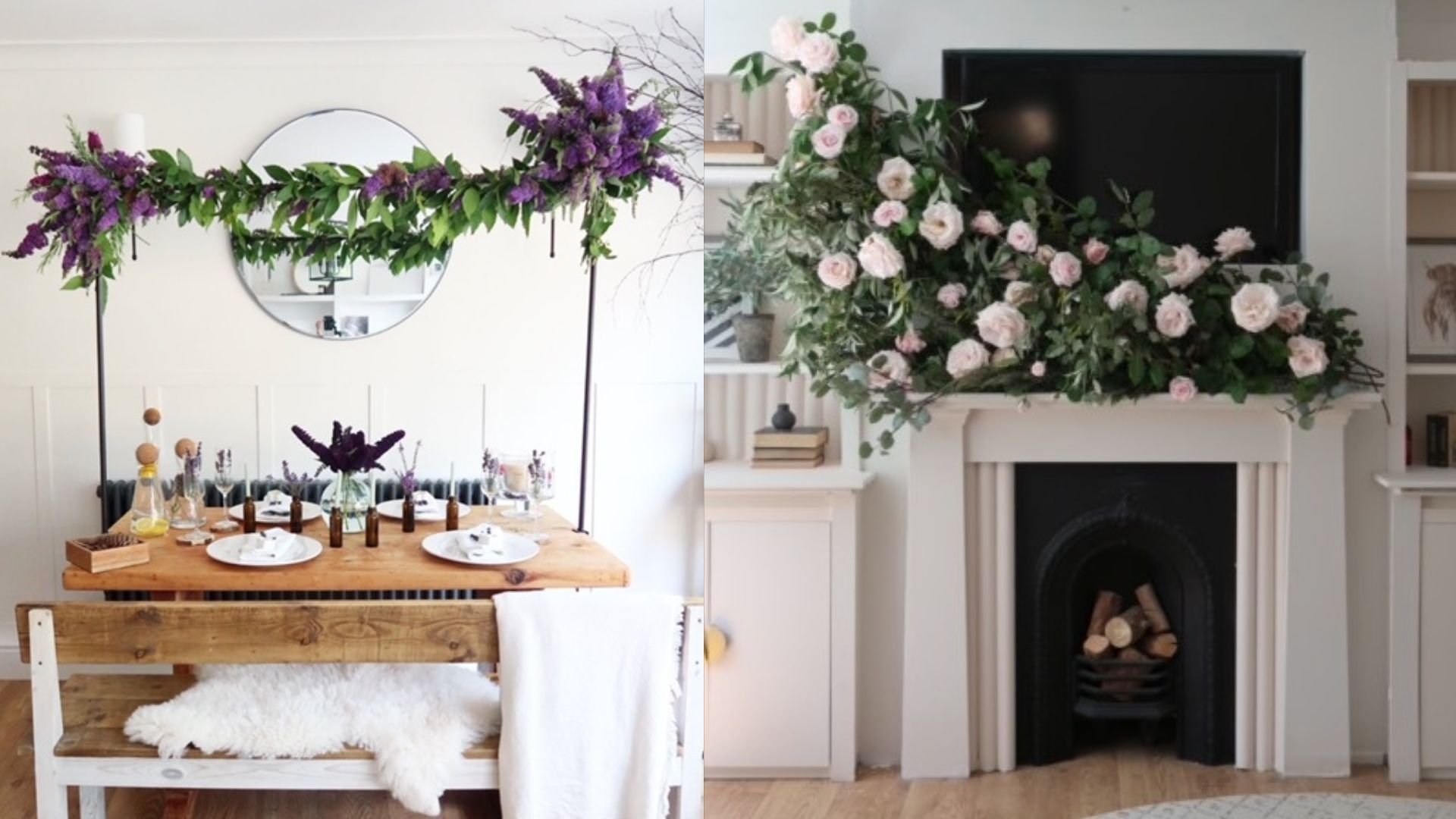
How to get started: Quite simply, get out in nature, keeping in mind the sort of foliage or flowers you're looking for - and what purpose they could serve in your home. Are you making a DIY wreath? Or are you just looking for some decorative shrubs for your fireplace? It's useful to have some level of focus.
It's also important to do some research beforehand into the areas you can access and the foliage that you are entitled to take. "I’d encourage anyone to get out in nature and have a go themselves - as long as they abide by all the rules of foraging as laid out in the Countryside Act (there are lots of resources on the web so it’s worth researching beforehand) and take care not to trespass or uproot any plants as this is illegal," advises Claire. "Only ever take from areas that have an abundance, never cause any damage and check there are no restrictions in place."
3. Plogging
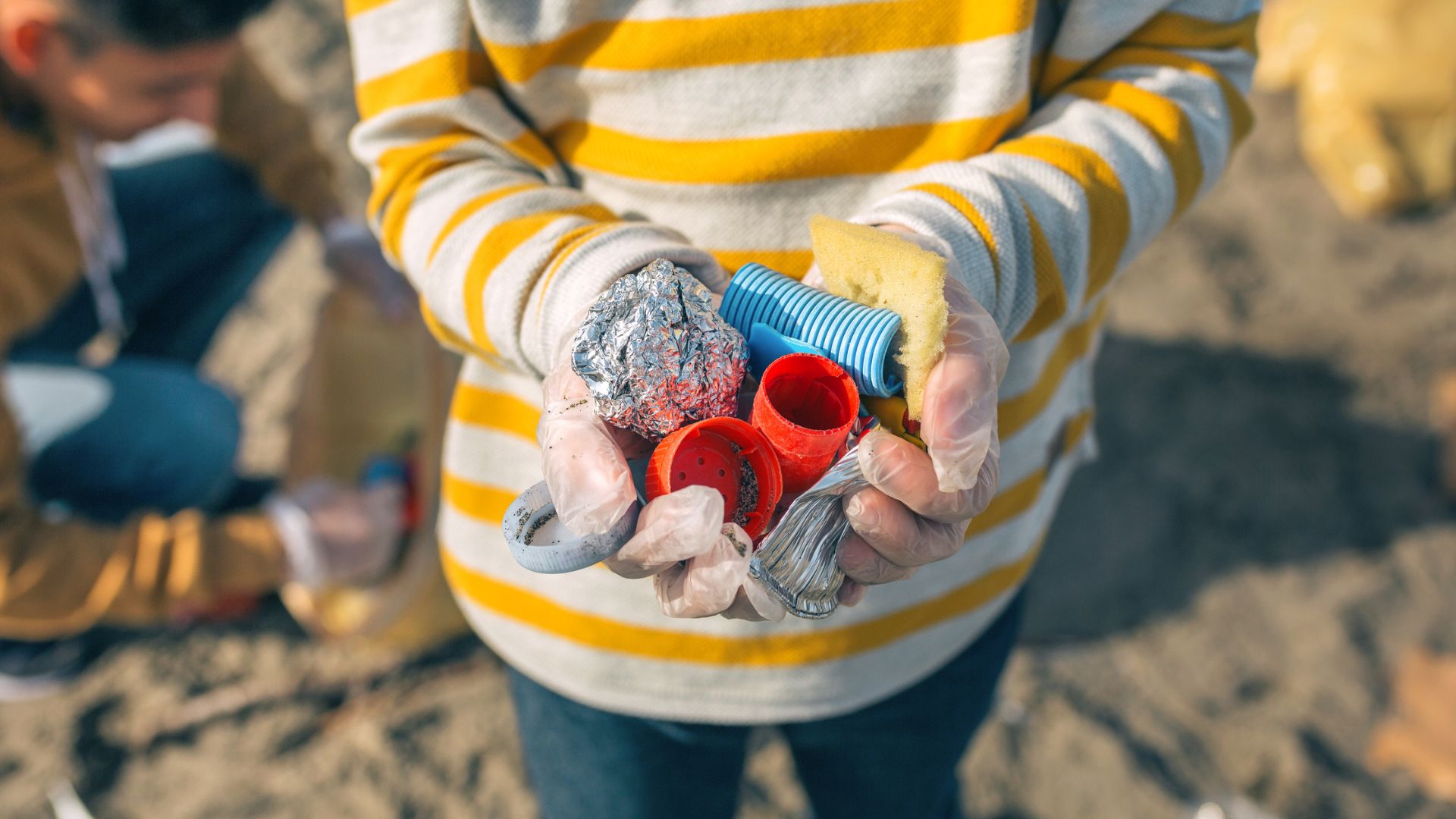
An amalgamation of the words "jogging" and the Swedish word "plocka upp" (picking up), plogging combines jogging and litter-picking, making it a great physical activity that's also social and eco-friendly.
We'll admit, the word "plogging" initially threw us too, but it's hard to think of a more accessible activity that has so many benefits, both to you and the wider community.
Outdoors advocate, podcaster and yoga teacher, India Pearson, got into the hobby as it combines two of her main passions - fitness, and nature. "I’ve always chosen moving outside in nature over being at the gym and since I moved to the coast, I have found the more time I spend moving in nature and by the sea, the more I want to protect this beautiful planet we live on, so I started combining litter picks with my workouts," she tells us.
"I lived in Sweden as a student and had seen Swedish friends sharing a new fitness trend on social media that they had coined ‘Plogging’ which combines jogging while picking up rubbish (“jogging” and “plocka upp”, a Swedish term that means “picking up”). I was totally inspired by their efforts and started spending 5-10 minutes picking up litter after I'd completed my run along the beachfront. I soon found it useful to pop a thin pair of gloves in my pocket before heading out to protect my hands from any nasty rubbish I found."
If jogging isn't your thing, you can take things at a slower pace and just incorporate litter-picking into other daily activities you do, like walking the dog.
"Nowadays I don’t restrict my fitness litter picks to just jogging, I also like to do it whilst I’m walking my dog or paddle boarding," adds India.
How to get started: While you can easily get started yourself, it's probably best to join a local group first as they'll have done all the adequate safety checks and will have the litter-picking equipment ready. India recommends the environmental charity Planet Patrolwho run free, group litter-picking activities across the country, but you can also find a local group on Clean Up UK in the UK and on Keep America Beautiful in the US.
4. Dog agility

Agility is a great shared hobby for you and your dog that can be executed at different levels. While some people may have aspirations to compete competitively with their dog, it can be a fun gentle walking workout for both of you without any pressure attached. It's also a great (and fun way) to help your dog learn obedience. This suggestion comes via the team at the dog health, welfare and training charity, Kennel Club.
"If you are looking for an energetic mix of everything, agility involves guiding your dog through a range of obstacles with the aim to complete the course in the fastest time," a spokesperson for the charity tells us. "Agility originated from the world’s greatest dog show, Crufts, and became a firm favorite, designed to put a dog’s fitness and handler’s ability to train to the test.
"Agility is fast-paced and action-packed, but the first steps start at ensuring your dog has basic training and is well socialized. There is a whole variety of obstacles to master, like hurdles, weaving poles, tunnels, see-saws, jumps and more!"
The activity is also endorsed by the likes of PDSA, who in a blog, praise it as a great way to provide your dog with stimulation and exercise.
How to get started: Firstly, think about whether this would suit both you and your dog. Does it suit their personality and are they in good enough health? The last thing you want to do is cause any stress to your four-legged friend. The Kennel Club has created a step-by-step video guide which can be found online at thekennelclub.org.uk/newtoagility which also has some handy tips about getting started.
5. Calligraphy
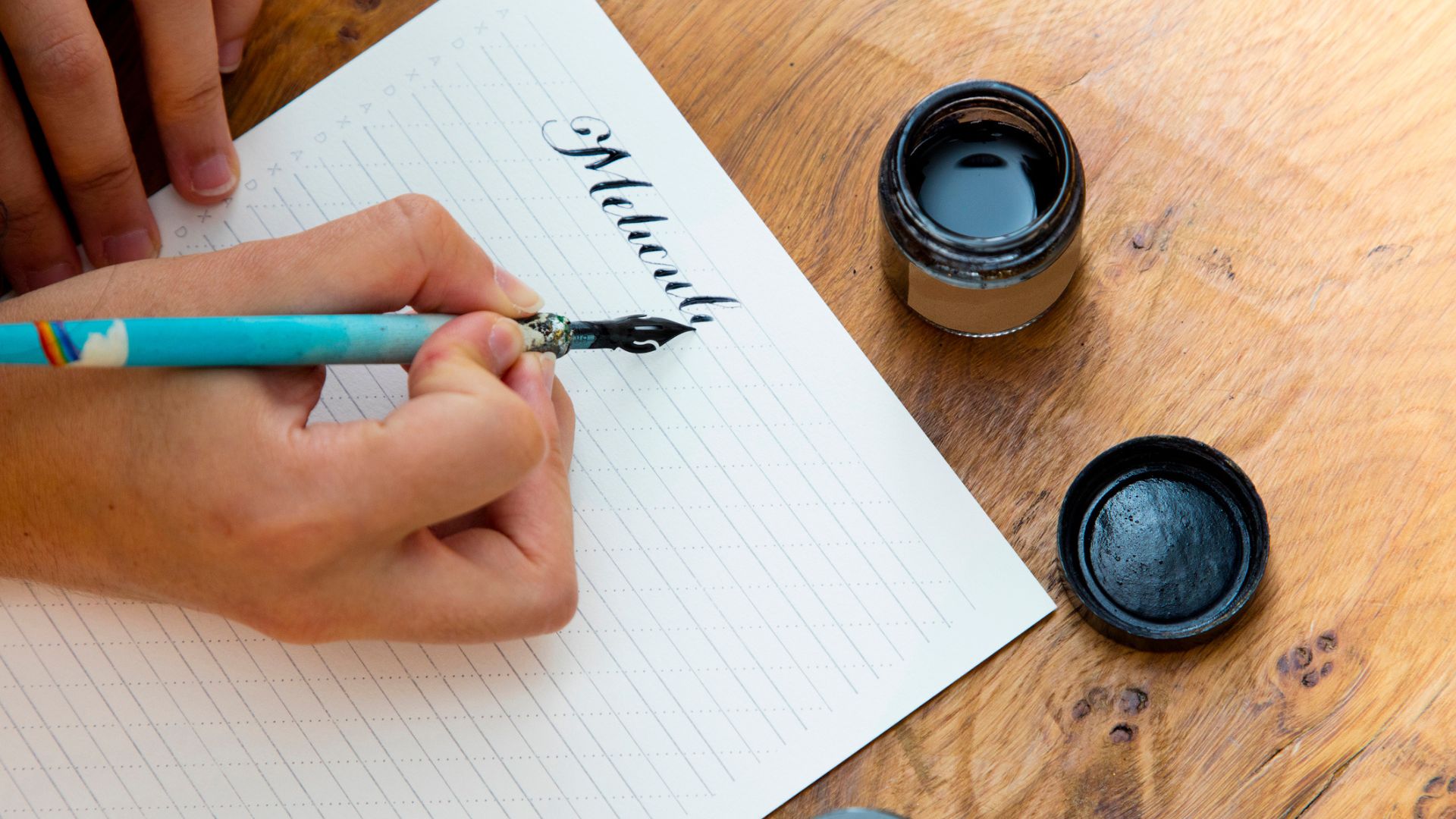
Taking up calligraphy and hand-lettering is a surprisingly fulfilling and useful hobby. Whether you're looking to pen some exquisite letters (another unusual hobby to consider) or you're designing homemade Christmas or birthday cards, learning calligraphy is a mindful activity as well as a helpful life skill.
How to get started: There is a wealth of online resources, but as a starting point, we recommend buying a book and some high-quality pens and paper. The Modern Calligraphy and Hand Lettering for Beginners by June&Lucy will teach you all the fundamentals you need to know and it includes clear instructions and practice pages (at the time of writing this book has over 18,900 'Excellent' reviews on Amazon out of a total of 26,279 reviews. You'll also need a set of Calligraphy pens (we like this set of Calligraphy pens for beginners from Amazon) and a high-quality pad of paper, like this Calligraphy Writing Paper set.
6. Microcementing
If you're looking for some high-impact, low-cost ways to renovate your home, consider microcementing. Not only is microcementing an easy way to make your home look expensive on a budget, you can also create a range of functional but highly unique bespoke designs. Once sealed, the material is super strong, waterproof and stain resistant so it's particularly good for countertops and tables.
"With the cost of living crisis putting such a strain on people’s finances, I can see more and more homeowners turning to DIY options like microcementing to create their dream kitchens and bathrooms," explains Claire. "So, while it might seem like an unusual hobby now I can see it becoming more and more commonplace." Claire has used microcement to create worktops, storage units, coffee tables and decorative vases.
"It became a bit of an obsession completely by accident!" she tells us. "I was looking for ways to revamp our kitchen (the worktops especially) but none of the in-budget options fit the brief - it was a typical case of champagne tastes on a lemonade budget.
"DIY is usually part of my daily life but at the start of 2022 I challenged myself to take on bolder and braver creative projects and use more technical processes, so after watching all the Concrete Lab tutorials I decided to give it a go and was thrilled with the results. I found the process of sculpting the structure of the kitchen by hand (on a tiny budget) so rewarding and empowering that it spurred me on to try more and more exciting projects.
"I love the concrete texture so looked for more ways to incorporate it into our home. As well as the larger projects like the worktops and built-in fridge surround, I found other low-key ways to use this rather addictive and cost-effective material - like a concrete coffee table and more recently concrete-style accessories."
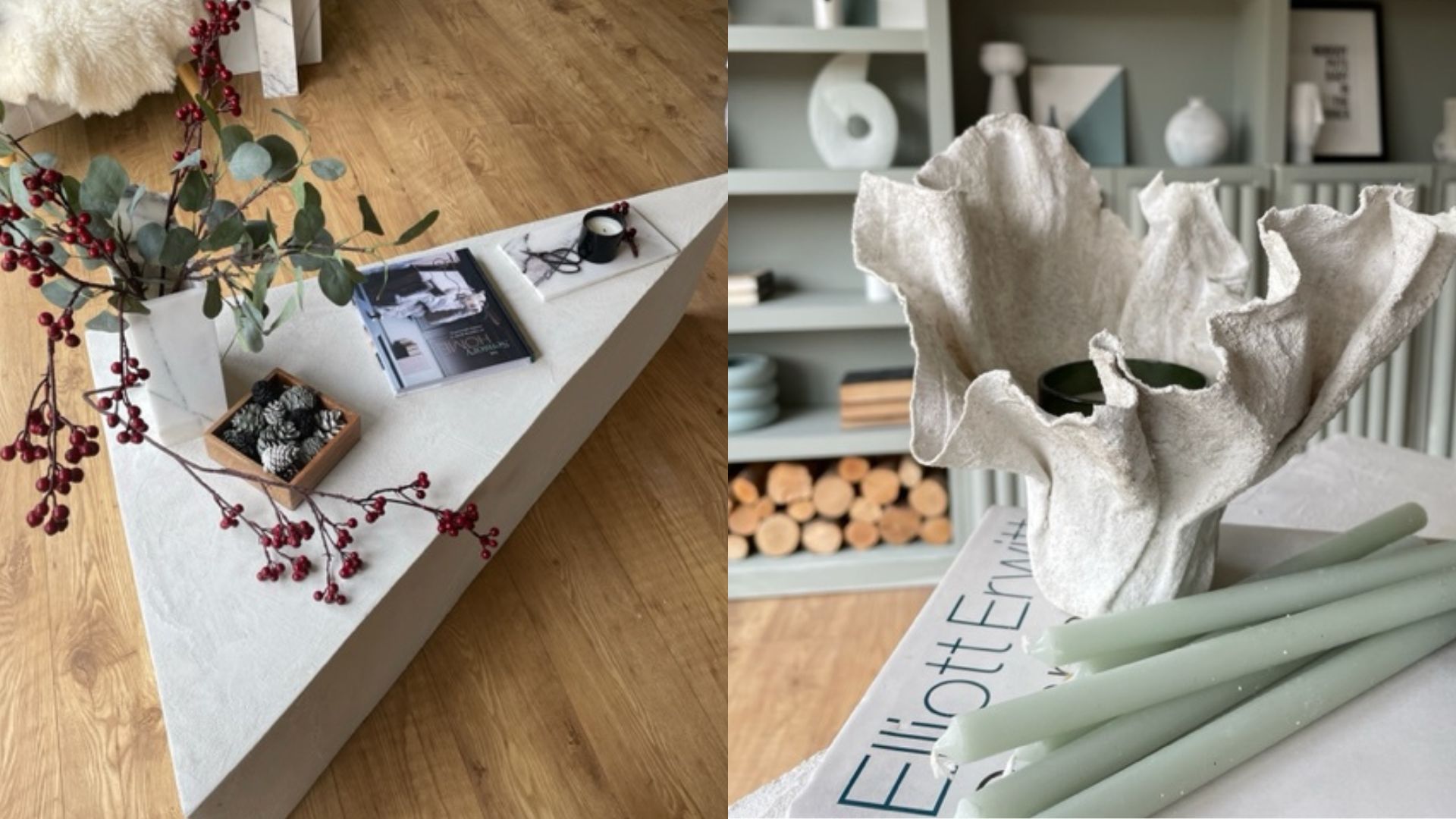
If microcementing your own worktops feels a little ambitious, Claire suggests undertaking smaller projects. For example, she has created vases (pictured) with small amounts of leftover kit. "I decided to play around with painting it onto vases and ornaments to give a textured concrete finish and finally by soaking material in the microcement mix and shaping and sculpting to create new ones," she tells us.
You can see Claire's creations on her Instagram account (https://www.instagram.com/clairedouglasstyling)
How to get started: "My advice would be to buy a sample kit and practice preparing the materials & using the tools. Then, when you are happy go for it…be tenacious, be bold and be uncompromisingly creative," advises Claire. Once you've got to grips with using micro cement, you'll start to understand just how versatile it can be and how many creations you can make. You can find a range of microcement tutorials on Claire's website which breaks down the process in an easy-to-understand way.
7. Volunteering
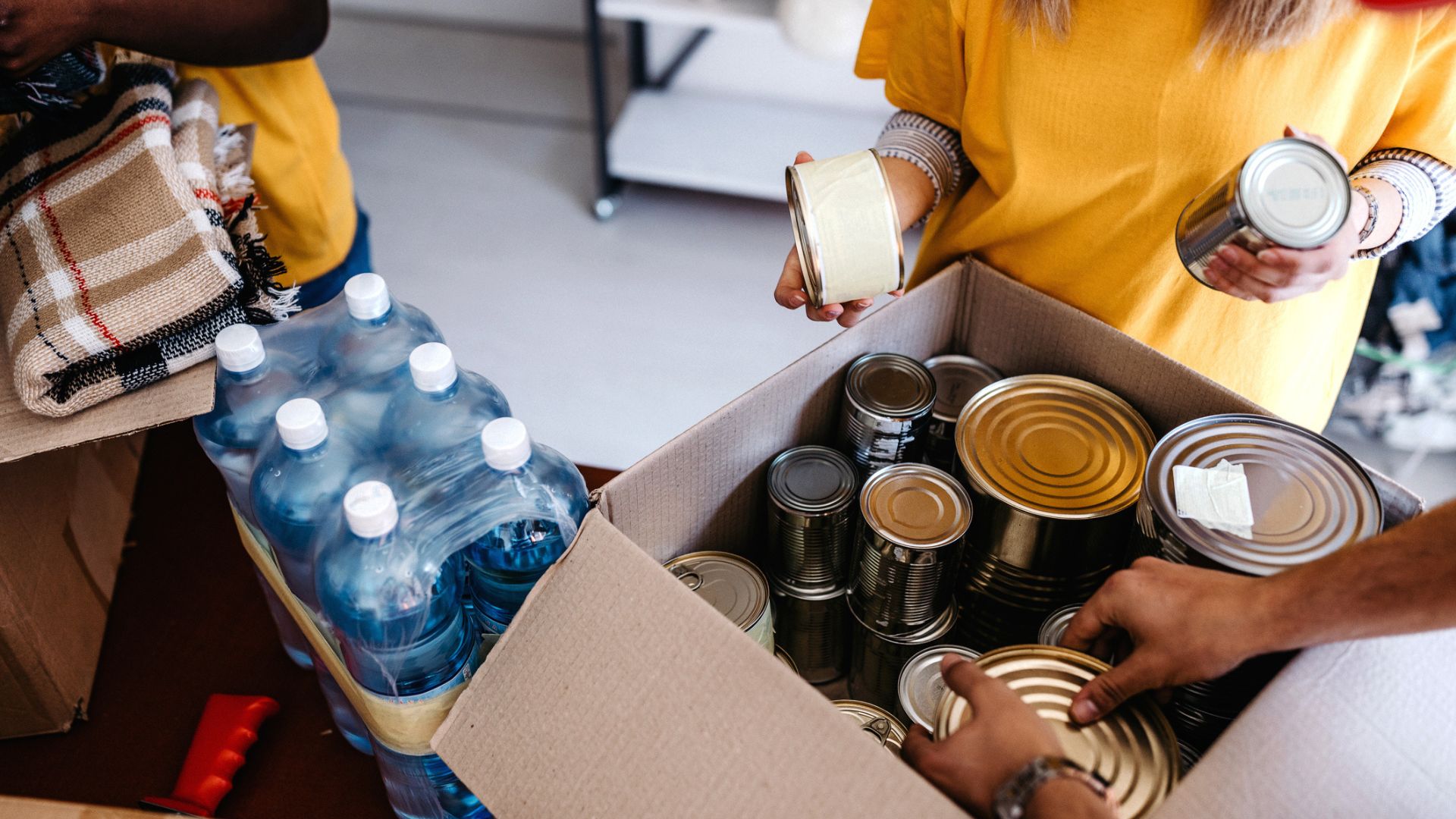
If you're looking for a worthwhile activity where you'll learn new skills while supporting communities that need it most, consider volunteering. While this hobby isn't necessarily unique in itself, there is a huge range of charities spanning different sectors and communities looking for volunteers with a diverse variety of skill sets. Whether you're interested in organizing events, helping with admin, fundraising, working in stores, cooking for soup kitchens or helping at a local foodbank, volunteering is one of the most genuinely impactful hobbies you can take up.
How to get started: Think about your primary reason for volunteering. Is it to help a specific charity or cause that you're interested in? If so, it's best to head to that charity's website or social media channels to see what roles they need to be filled. If you're more interested in upskilling or want to volunteer to advance a career in a specific area, your first port of call will be job sites like Indeed or LinkedIn where you can search for voluntary roles in specific areas. In the UK, you can also find volunteering opportunities at gov.uk, and on Volunteer Match in the US.
8. Learning a new language

Learning a foreign language can be a fun and sociable hobby, especially if you choose a language that will be of some use to you. Whether you want to brush up on Spanish for your next vacation or Italian so you can impress the waiters at your local pizzeria, you might be surprised at how deeply satisfying it is to master even the most basic vocabulary in a new language. The benefits of learning a new language are well-documented, from improving cognitive functions to the fact that it can be a genuinely useful life skill, especially if you're working in an international career or traveling often. This is also a great hobby for couples and one of the best ways to make friends as an adult as you can practice your new skill together.
How to get started: The most important thing is to try a few different ways of learning to work out what suits you best. We're a big fan of Babbel , a language-learning app with lessons grounded in real conversations. I've been using the app to brush up my German and have been pleasantly surprised by how accessible it is, and how useful the vocabulary learned actually is. There are no tables of grammar to memorize or random phrases that you'll never use in real life, which I've often struggled with on other apps.
If you're looking for something more sociable, consider looking into classes. As someone who's lived in a few different countries, I've always found face-to-face classes helpful if you find yourself feeling too shy to speak aloud when you're in the company of natives or anyone fluent in the language you're trying to learn. Not to mention, practicing (and even socializing) with classmates is a great way to keep your motivation levels up.
9. Decoupage
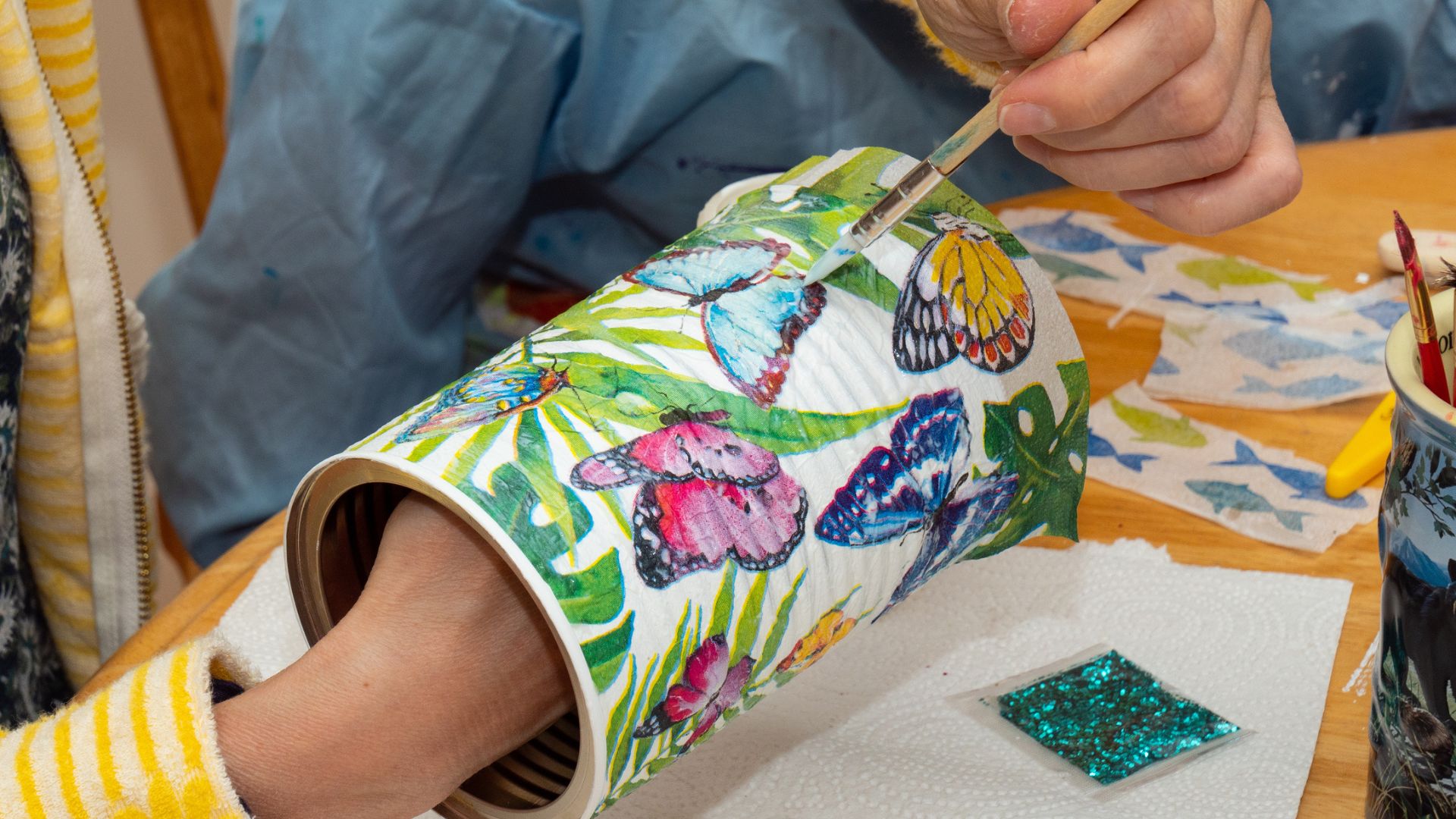
Decoupage entails decorating a surface with cut-out pieces of patterned paper, often in different patterns or accompanied with paint or gold leaf. You can entirely transform pieces of furniture, ornaments, book covers, paper mache shapes, vases or anything else you want to breathe new life into. It's also a fun way to introduce on-trend colours into your interiors. What we really like about decoupage is that it's suited to all skill levels and you can rectify any mistakes pretty quickly just by overlaying more paper. And if you really don't like your work, you can often remove it pretty easily too before it's sealed.
How to get started: We'd recommend ordering a beginner's kit so you can try the process before embarking on a bigger project. Hobbycraft sells several ready-to-use kits that include the materials, as well as a base item to decoupage on. If you have an idea of the base or item you want to cover, all you need is decoupage paper, decoupage glue and a bristled brush. We love the selection of papers and designs at Hobbycraft, but you can also find a wide range of decoupage papers and kit on Amazon.
10. Jam-making
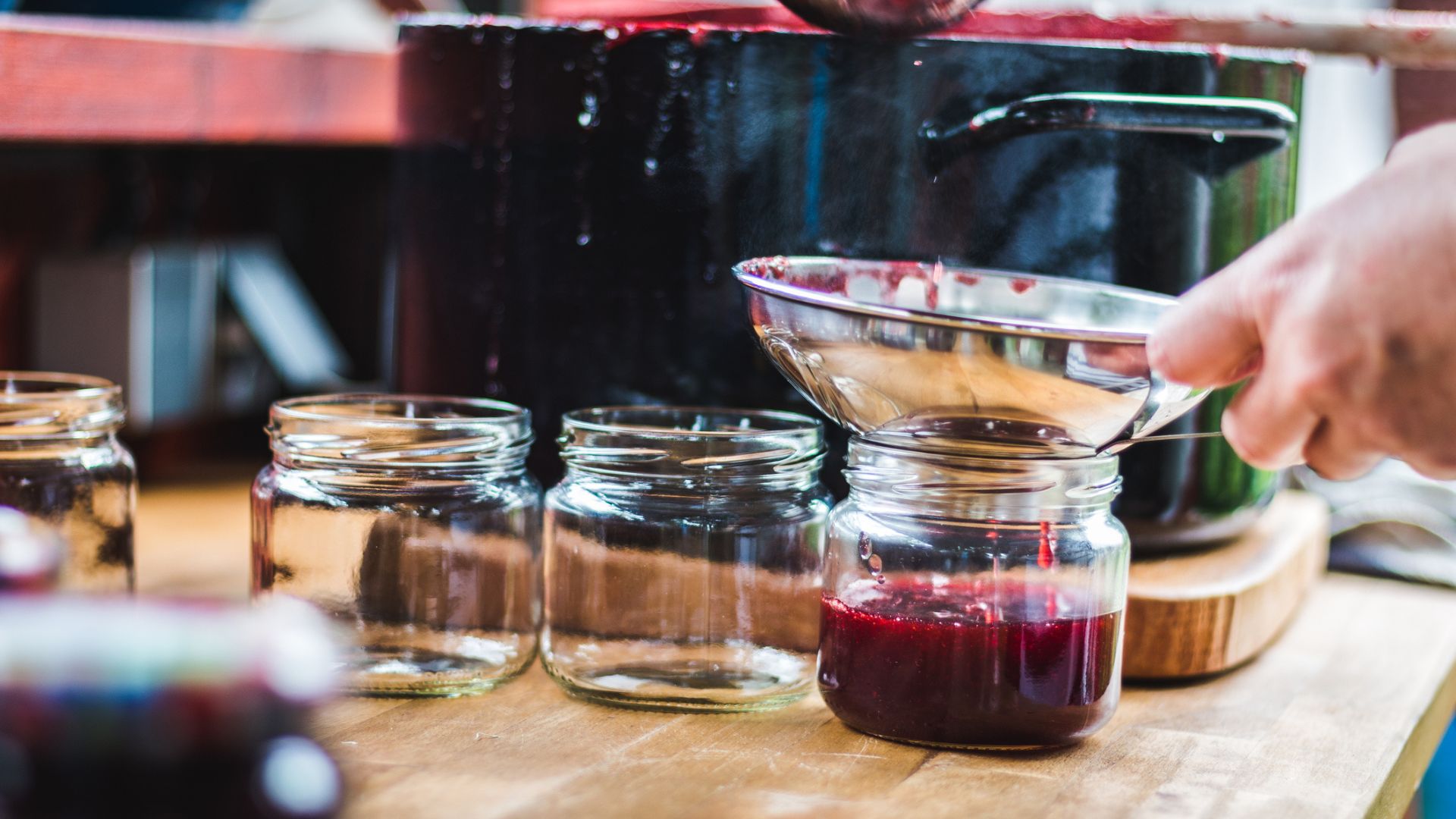
Jam-making is a great way to preserve a glut of fruit and homemade jam also makes a lovely housewarming gift. It's also a fun hobby idea as you can get really creative with your recipes and even the jar design and labels (this hobby combines beautifully with calligraphy!) Don't forget to consult our guide to fixing the most common jam mistakes to ensure you get off on the right track.
How to get started: Getting started couldn't be easier, simply find a good jam recipe (like this simple Raspberry jam recipe) and follow the instructions. If you're making jam for the first time, it's best to use high-pectin fruits like apples, citrus fruits and currants. Otherwise, you'll need to add pectin to thicken your jam. However, all good recipes should specify this either way.
11. Botanical art
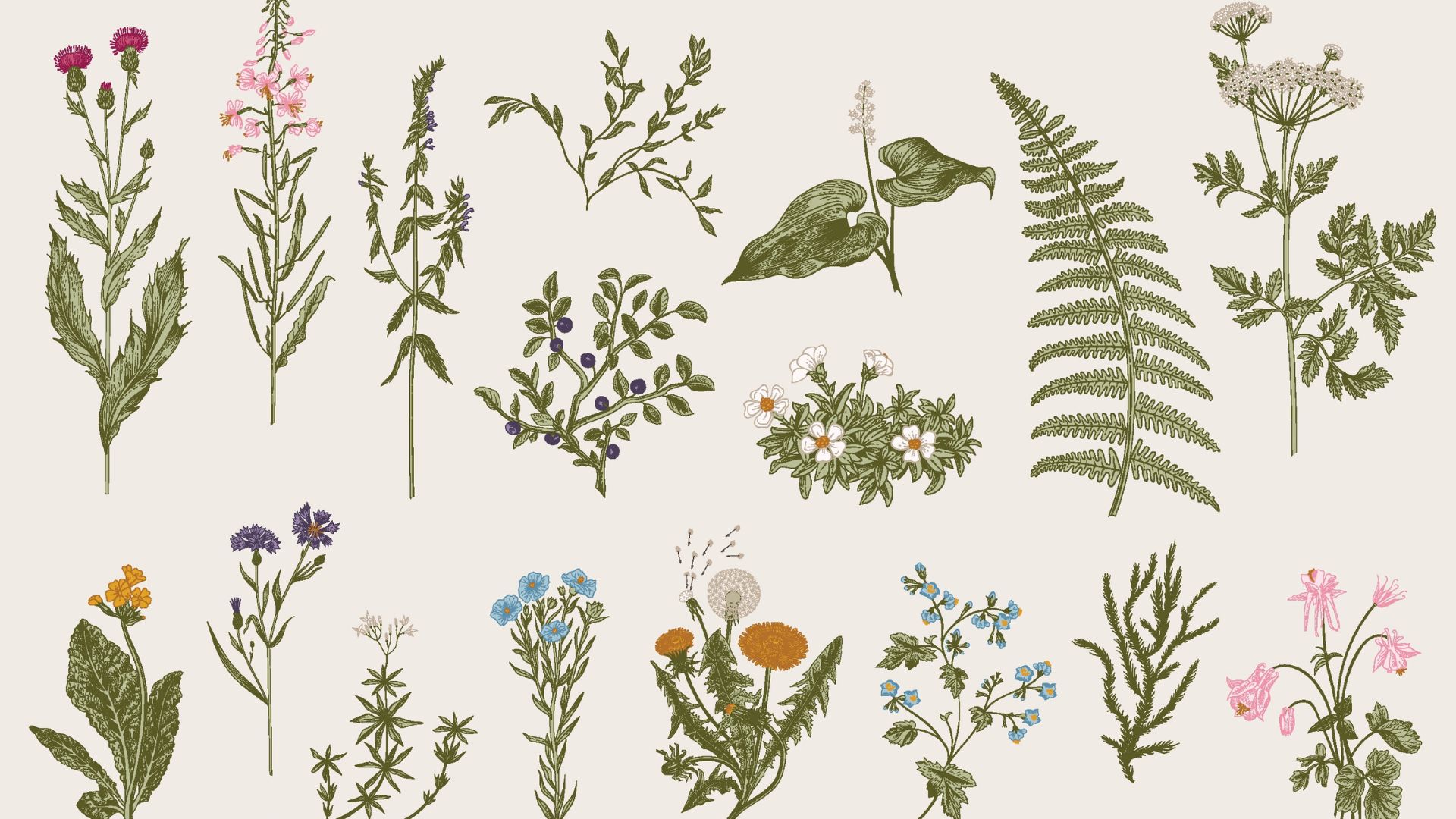
If you're keen to get in touch with your creative side and take up any form of artistic practice, it can be useful to work within set parameters. That's why we love the idea of botanical art. The subject material is easy to source, you can use any medium you want (ink, watercolors, pencil, pastels or oils) and if you're picking it up for the first time, plants and flowers are a relatively easy entry point. Not to mention, botanical prints are extremely on-trend and will complement any Japandi interior scheme.
How to get started: Take small steps. Professional botanical art is painstakingly precise and scientifically accurate; you don't need to reach that stage, and if you aspire to do that, it will take time. Buy some good books, go to exhibitions and absorb yourself in the art form. From there, you can buy some brilliant books for getting started, such as Botanical Illustration from Life or consult YouTube, where there are hundreds if not thousands of strong how-to videos. Our favorite approach, however, is to sign up to a class. Whether you're UK or US based, you can find in-person and online classes near you at Botanical Art and Artists. Just remember to check the skill level before you sign up!
12. Wreath making

When you think about wreaths, Christmas is probably the first thing that springs to mind. However, if you found yourself inspired by the best DIY Christmas wreath making kits, then we have good news for you: wreaths are a beautiful accompaniment to your home all-year round. Just think about all the summer blooms you can add in the warmer months and the different themes you can adopt for different celebrations. We love these Easter wreath ideas, for example.
How to get started: If you're new to wreath-making, we advise getting started with a good kit. Hobbycraft has some brilliant guided tutorials and sells everything you need to get started, as well as some super-simple kits like this natural wreath kit that you can use as a base. Amazon also has a wide selection of supplies.
13. Book-binding

Booking binding is relatively easy to learn without much resource or expense required, making it the perfect at-home hobby. You don't need any fancy equipment to get started but like many other hobbies on this list, if you do start to take it more seriously you can invest in better supplies and tools. A hand-bound book is also a thoughtful gift idea for a milestone birthday, like a 40th birthday or you could even fill it with joyful snaps if you're looking for a great wedding gift.
How to get started: Once again, start small with a thin, blank paper-bound book, then work your way up. There's no point in throwing yourself in at the deep end as you risk ruining expensive materials or worse, your favorite books. There are countless online tutorials and blogs that can advise on processes and kit. Below are some of our recommended ones.
Books: Making Handmade Books
Tools: Book binding kit for beginners
Tutorial: How to make a sketch book by Sea Lemon
14. Sport walking

Sport walking is like regular walking, carrying all the benefits of walking, but at an accelerated pace. Also known as power walking, it's basically just a way to create walking goals for yourself, and to turn your walking into a workout. This is a particularly good hobby to take up if you work in a sedentary job or if you have impaired mobility that stops you from doing higher-impact sports. Your gait should be more forceful than in normal walking and strides should be longer. You should also create speed goals, though these will vary depending on your fitness levels.
How to get started: Our guide to walking as a workout (linked above) provides some strong step-by-step instructions on getting started. But in summary, you'll need one of the best fitness trackers like a Fitbit for this as you'll need to measure miles per hour. As a guide, think of 2 to 3mph as moderate and 6 to 6.5mph as very fast. And of course, you'll need a pair of the best walking shoes or running shoes, depending on your pace.
15. Nail art

If you're inspired by the latest nail trends or love getting a regular manicure, why not learn how to do your own nail art? Not only can you save money and trips to the salon but you can get super creative with your designs and have truly unique talons. Firstly, you'll want to ensure you know how to paint your nails like a pro, then we recommend learning some simple designs, like how to do your own ombre nails, then you're ready to get stuck into learning nail art.
How to get started: There are scores of YouTube videos and blogs all uploaded by people who have learnt the craft. However, if you really want to 'nail' your technique (sorry, we couldn't resist), we'd recommend researching guided in-person or online courses. If you're a hobbyist, you won't need much more than a short course so there's no need to sign up for long-term, certified courses unless you want to put your skills to use in a professional setting. Alternatively, we personally find videos the best format, like this one from cutepolish as it's important you have strong visual instructions.
16. Upcycle old clothes

Whether you're looking to perfect your capsule wardrobe or just trying to live a more sustainable lifestyle, upcycling is a budget, environmentally friendly way to breathe new life into your clothes. While owning one of the best sewing machines undoubtedly helps, you can make many high-impact alternations with minimal kit. Do you have some stained white t-shirts in your closet that you once loved but now never wear? Think about dying them. Or perhaps you have a dress that's in a print you love but it just doesn't fit anymore. Think about turning it into a tote bag, or even cutting it into a top. Jeans can be easily patched or embroidered, while old shirts can be the basis for a handmade quilt.
How to get started: Firstly, identify any old clothes that you no longer wear. Designer or embellished items with intricate sequins or beading are a little more difficult to work with so it may be better to consider selling them. Consult our guide on how to sell clothes online if you're not sure how to get started. While most other fabrics can be upcycled, if you're a complete beginner, working with denim and cotton is easier, so we'd advise getting started with cotton t-shirts or denim jeans. Once you've picked your item, think about how you could transform it into a piece you'd actually wear - Pinterest is great for inspiration, and many of our easy sewing projects can be made from old pieces of clothing. Once you have an idea of what you want to make, research tutorials and blogs online - similar to nail art tutorials and book-binding, being able to watch the process first-hand is extremely helpful.

Anna is an editor and journalist with over a decade of experience in digital content production, ranging from working in busy newsrooms and advertising agencies to fashion houses and luxury drinks brands. Now a freelance writer and editor, Anna covers everything lifestyle, from fashion and skincare to mental health and the best cocktails (and where to drink them).
Originally from Glasgow, Anna has lived in Berlin, Barcelona, and London, with stints in Guernsey and Athens. Her love of travel influences her work, whether she’s stocking up on the best skincare at French pharmacies, taking notes on local street style, or learning to cook regional cuisines. A certified cinephile, when she's not travelling the world, you'll find her hiding away from it at her local cinema.
